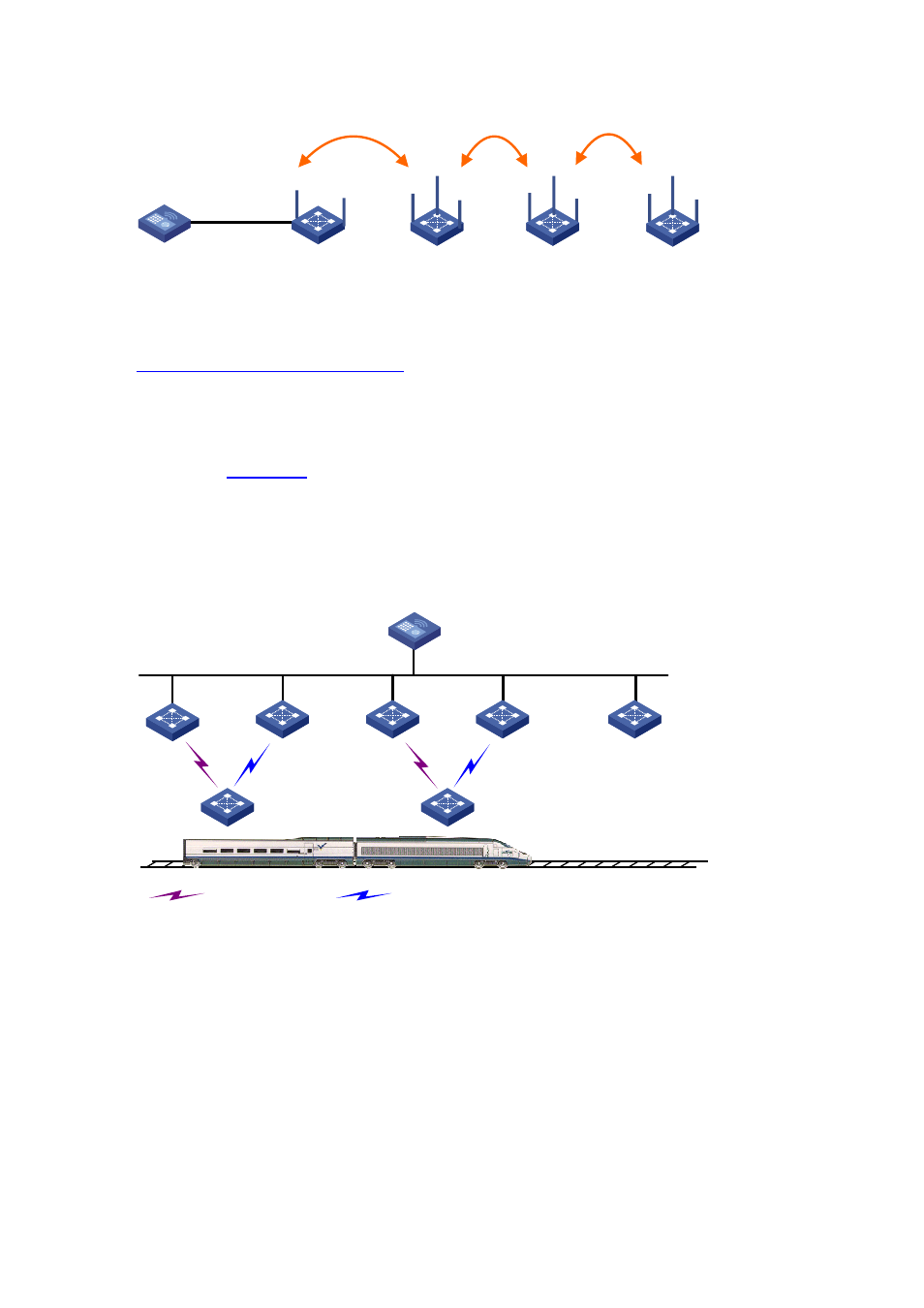Subway wlan mesh deployment, Wlan mesh security, Figure 32-5 – H3C Technologies H3C WX6000 Series Access Controllers User Manual
Page 314

32-5
Figure 32-5 Two radios on the same mesh
AC
MPP
MP 1
MP 2
Radio 1
Radio 1
Radio 1
Radio 2
Radio 2
Radio 2
MP 2
Radio 1 Radio 2
Radio 3
Radio 3
Radio 3
If the MP supports three radios, in this case, you can configure Radio 1 as the uplink interface, Radio 2
as the downlink interface, and Radio 3 as the multi-beam antenna. For detailed configuration, refer to
Tri-Radio Mesh Configuration Example
Subway WLAN mesh deployment
Subway is an important traffic means for a modern city. In a subway system, control information needs
to be sent to trains to effectively manage trains and provide various services to customers.
As shown in
, a subway WLAN mesh solution has fit MPs deployed both on the train and
along the rail, which are managed by the same AC. A train MP continuously scans new rail MPs, and
sets up backup links with the multiple rail MPs with the best signal quality. The active mesh link is used
for data transmission, and the backup mesh link is used as a backup.
Figure 32-6 Subway deployment of mesh
Rail MP 1
Rail MP 2
Rail MP 3
Rail MP 4
Rail MP n
...
Train MP 1
Train MP 2
...
AC
Active link
Dormant link
The subway WLAN mesh deployment is based on the Mobile Link Switch Protocol (MLSP), which is a
proprietary protocol developed by H3C for high-speed link switch with zero packet loss during train
movement. H3C has adopted new IEEE standard 802.11s as the underlying protocol for link formation
and communication between mobile radio (MR) and wayside AP. Train MPs are not required to act as
authenticators.
WLAN Mesh Security
As a WLAN network uses air as the communication medium, it is very vulnerable to malicious attacks.
In a mesh network, a wireless connection passes through multiple hops, and thus a mesh network is
more vulnerable to malicious attacks. Therefore, WLAN mesh network security becomes an essential
